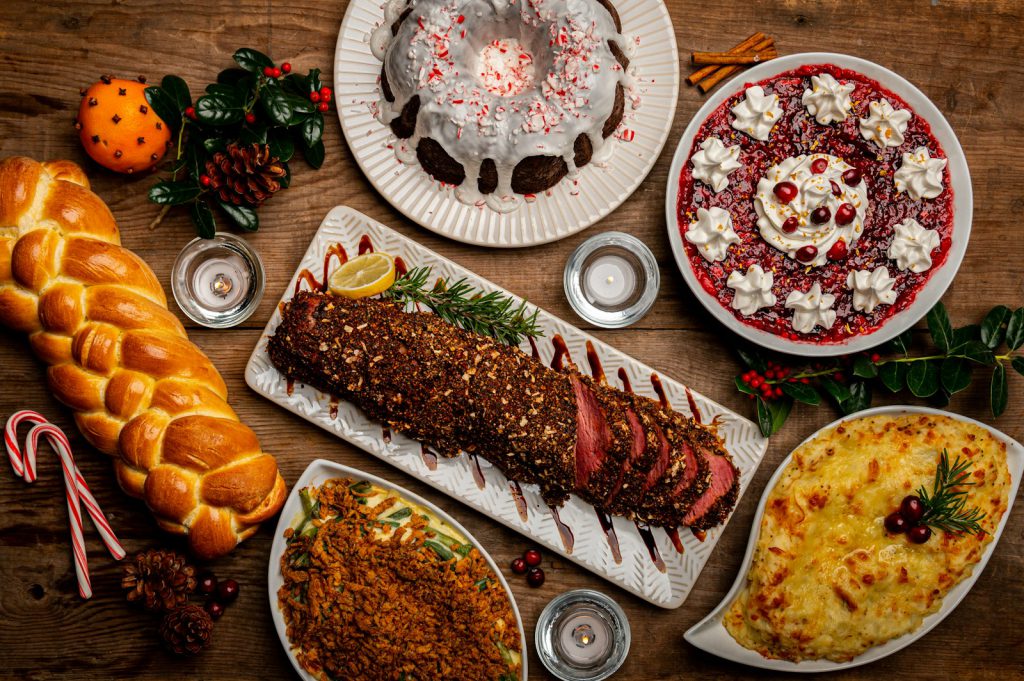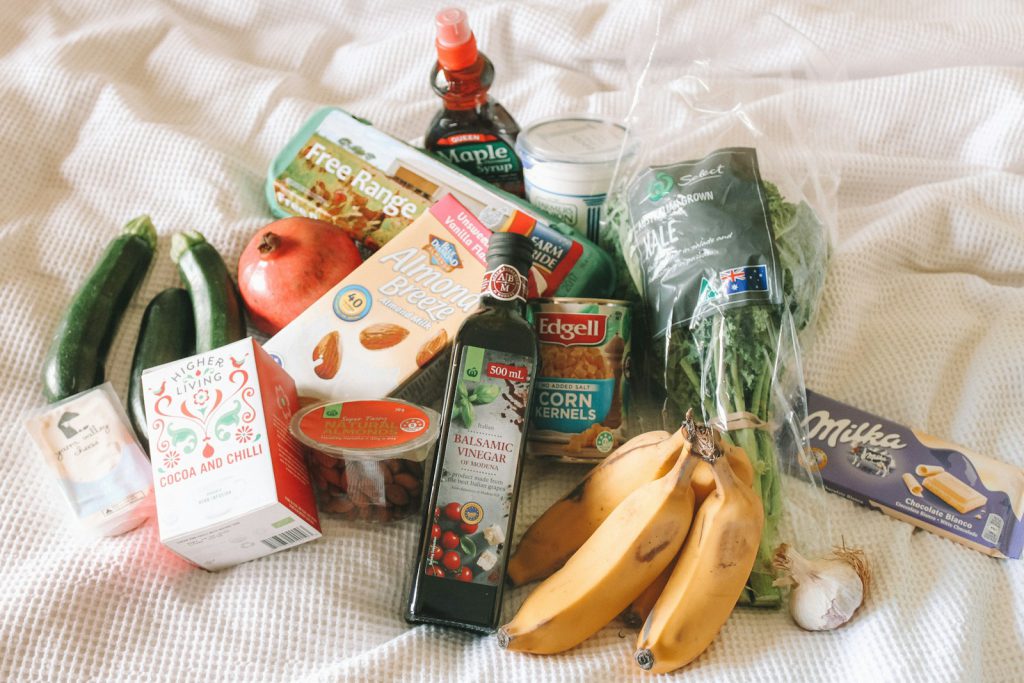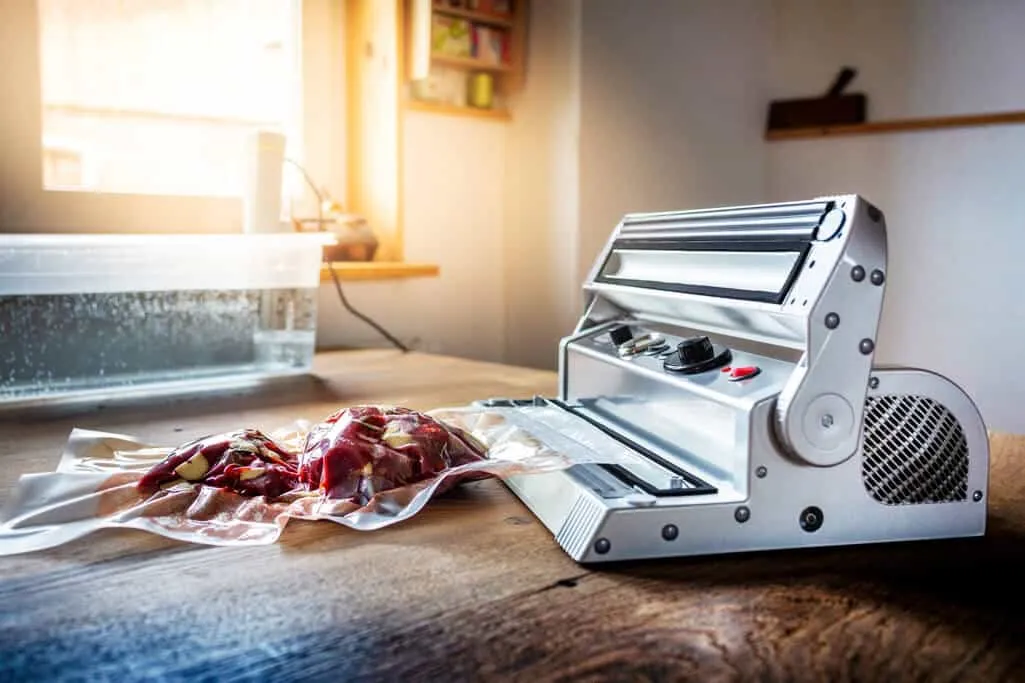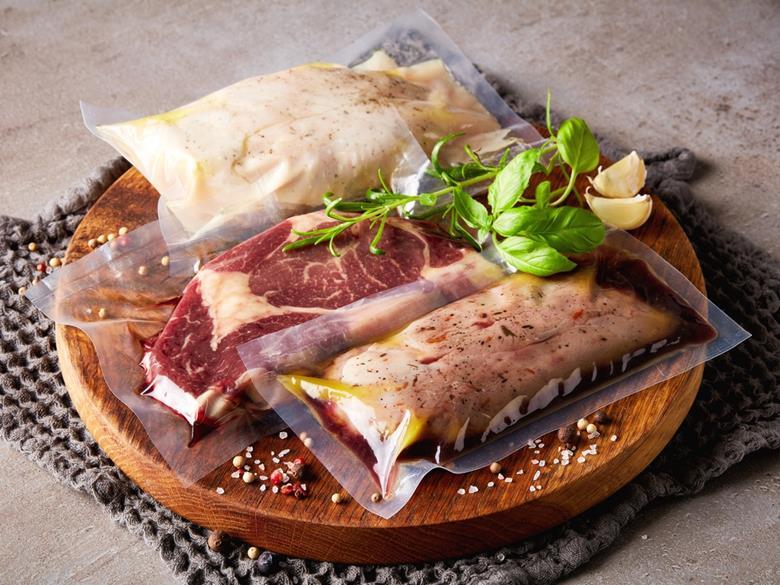In today’s fast-paced world, balancing work, family, and personal time can be challenging. This has led to the rise in popularity of ready-to-eat meal packs for families. However, traditional cooking still holds a significant place in many households. This article delves into the detailed comparison between ready-to-eat meal packs and traditional cooking, focusing on various aspects such as convenience, health, cost, flavor, environmental impact, variety, preparation time, storage, and nutritional value.
Convenience
Ready-to-eat meal packs are synonymous with convenience. They require minimal preparation—usually just a few minutes in the microwave or oven—and can be consumed immediately. This is particularly beneficial for busy professionals, students, and families with hectic schedules. The ease of use is unmatched, allowing you to enjoy a meal without the hassle of cooking and cleaning.
In contrast, traditional cooking demands significant time and effort. It involves planning meals, shopping for ingredients, preparing the ingredients, cooking, and finally cleaning up. For those with limited time, this can be a daunting task. However, the process of cooking can also be therapeutic and enjoyable for many, offering a sense of accomplishment and the opportunity to bond with family members.
Table 1: Comparison of Convenience
| Aspect | Ready Meal Packs | Traditional Cooking |
|---|---|---|
| Preparation Time | 5-10 minutes | 30-60 minutes |
| Cleaning | Minimal | Extensive |
| Meal Planning | Not required | Required |
| Shopping Frequency | Infrequent | Frequent |

Health and Nutrition
The health and nutritional value of ready-to-eat meal packs can vary significantly. While some meal packs are designed to be healthy, offering balanced portions of protein, carbohydrates, and vegetables, others can be high in sodium, preservatives, and unhealthy fats. Consumers must read labels carefully to make healthier choices. Many meals are also portion-controlled, which can help with calorie management.
Traditional cooking, on the other hand, allows complete control over the ingredients and cooking methods. This makes it easier to prepare meals that align with specific dietary needs or preferences. Fresh ingredients and home-cooked meals generally offer higher nutritional value compared to processed foods.
Table 2: Nutritional Comparison
| Aspect | Meal Packs | Traditional Cooking |
|---|---|---|
| Sodium Content | Often High | Controllable |
| Preservatives | Often Present | None |
| Freshness | Moderate | High |
| Customizability | Limited | Extensive |
Cost
Cost is another critical factor when comparing meal packs and traditional cooking. Ready meals can be expensive, especially those that are marketed as gourmet or organic. However, they save time and effort, which can be valuable for those with busy lifestyles.
Traditional cooking can be more cost-effective, especially when buying ingredients in bulk and utilizing leftovers. Home-cooked meals can be as simple or as elaborate as desired, allowing for greater flexibility in budgeting. Additionally, cooking at home often results in larger portions, which can be stored and consumed later.
Table 3: Cost Comparison
| Aspect | Packs | Traditional Cooking |
|---|---|---|
| Initial Cost | High | Variable |
| Long-term Cost | Potentially High | Lower |
| Bulk Purchasing | Not Applicable | Applicable |
| Leftovers | Rare | Common |
Cost of Ready-to-Eat Meal Packs vs. Traditional Cooking
When comparing the costs of ready to eat meal packs and traditional cooking, it’s essential to consider not just the direct costs but also the associated time and convenience factors. Ready-to eat meals often come with a higher upfront cost, typically ranging from $5 to $15 per meal. However, these meals save significant time that would otherwise be spent on meal planning, grocery shopping, cooking, and cleaning.
For busy individuals, this time savings can translate into financial savings as well. The average American spends over six hours per week on meal preparation and cleanup (Aviyne). By opting for ready-to-eat meals, this time can be redirected towards more productive activities or leisure, effectively adding value to one’s life.
Additionally, prepared meals help reduce food waste. Traditional cooking often results in excess ingredients that may spoil before being used, especially in smaller households. Ready to-eat meals are portion-controlled, ensuring that you consume exactly what you need without leftovers, leading to better cost efficiency over time (cookindocs.com).

How Ready-to-Eat Meals Can Help?
quick meals offer several financial benefits beyond just the price tag. They eliminate the need for frequent grocery store trips, which can lead to impulse purchases and overspending. Furthermore, by having pre-prepared meals available, the temptation to order takeout—which is often more expensive and less healthy—is reduced (QuickyBowl).
Moreover, many pre packed meal services offer subscriptions or bulk purchase discounts, which can make them more affordable. The convenience of having meals delivered directly to your home also adds value, especially for those with demanding schedules or limited access to grocery stores.
Table 10: Cost Comparison and Savings Potential
| Aspect | Prepared Packs | Traditional Cooking |
|---|---|---|
| Cost per Meal | $5-$15 | $2-$5 |
| Time Saved | High | Low |
| Food Waste | Low | Variable |
| Frequency of Takeout | Reduced | Unaffected |
| Overall Savings | Moderate | High (with bulk buying) |
Ideal for Busy Individuals
The Appeal of Ready-to-Eat Meals for Busy Lives
For busy individuals, balancing work, family, and personal time can be incredibly challenging. Ready-to-eat meal packs offer a practical and efficient solution, allowing these individuals to maintain a healthy diet without dedicating extensive time to meal preparation. These meals are designed to be quick and easy, often requiring just a few minutes in the microwave or oven (Mealfan).
Time Efficiency
This meals save significant time, eliminating the need for meal planning, grocery shopping, and lengthy cooking sessions. For professionals, students, and parents managing multiple responsibilities, this time savings is invaluable. Statistics show that using ready-to-eat meals can free up hours each week, which can then be used for work, relaxation, or other personal pursuits.
Health and Nutrition Benefits
Contrary to some misconceptions, Meals are designed to be nutritious and balanced. Meal services often work with nutritionists and dietitians to ensure their meals provide essential vitamins and minerals, catering to various dietary needs. This is particularly beneficial for those who may struggle to maintain a balanced diet due to their busy schedules
Cost-Effectiveness for Busy Individuals
While ready meals might initially seem more expensive, they can be more cost-effective in the long run. When considering the cost of groceries, the time spent preparing meals, and the potential for food waste, ready eat meals offer a streamlined and financially sensible option. Many meal services also provide budget-friendly plans and discounts for regular customers, making them accessible to a wide range of consumers (Aviyne).
Table 11: Time and Cost Efficiency for Busy Individuals
| Aspect | Ready | Traditional Cooking |
|---|---|---|
| Preparation Time | 5-10 minutes | 30-60 minutes |
| Cleanup | Minimal | Extensive |
| Nutritional Balance | High | Variable |
| Cost Efficiency | Moderate | High (with efficient planning) |
By embracing the convenience of ready-meals, busy individuals can enjoy nutritious, delicious meals without the stress and time commitment associated with traditional cooking. These meals provide a practical solution that supports a balanced lifestyle while ensuring that dietary needs are met efficiently and economically.

Flavor and Taste
Flavor and taste are subjective aspects that can greatly influence one’s preference for ready-to-eat meal packs or traditional cooking. Ready-to-eat meals have improved significantly over the years, offering a variety of flavors and cuisines. However, they often fall short in comparison to freshly prepared meals due to preservatives and the reheating process.
Traditional cooking allows for the use of fresh herbs, spices, and ingredients, resulting in richer and more authentic flavors. The ability to experiment with recipes and adjust seasoning to taste also contributes to the superior flavor of home-cooked meals.
Table 4: Flavor Comparison
| Aspect | Ready-to-Eat Meal Packs | Traditional Cooking |
|---|---|---|
| Freshness of Flavor | Moderate | High |
| Variety of Flavors | High | High |
| Authenticity | Variable | High |
| Customization | Limited | Extensive |
Environmental Impact
The environmental impact of ready-to-eat meal packs versus traditional cooking is an important consideration. Ready-to-eat meals often come in plastic packaging, which contributes to plastic waste and environmental pollution. The production and disposal of these packages can have a significant ecological footprint.
Traditional cooking typically involves less packaging waste, especially when ingredients are purchased fresh and in bulk. Cooking at home also allows for the use of reusable containers and utensils, further reducing environmental impact. However, the energy consumption from prolonged cooking times should also be considered.
Table 5: Environmental Impact Comparison
| Aspect | Ready-to-Eat Meal Packs | Traditional Cooking |
|---|---|---|
| Packaging Waste | High | Low |
| Energy Consumption | Low | Variable |
| Reusability | Low | High |
| Ecological Footprint | High | Lower |
Variety and Options
The variety and options available in ready-to-eat meal packs have expanded significantly, with offerings ranging from different cuisines to dietary-specific meals like gluten-free, vegan, and keto-friendly options. This makes it easy for consumers to find meals that suit their taste and dietary needs.
Traditional cooking offers limitless variety and options. With access to recipes online and cookbooks, home cooks can explore different cuisines and cooking techniques. The ability to adjust recipes based on personal preferences and dietary restrictions adds to the appeal of traditional cooking.
Table 6: Variety and Options Comparison
| Aspect | Ready-to-Eat Meal Packs | Traditional Cooking |
|---|---|---|
| Cuisine Variety | High | Very High |
| Dietary Options | High | Very High |
| Custom Recipes | Limited | Unlimited |
| Innovation | Moderate | High |
Preparation Time
Preparation time is a critical factor for many people when choosing between ready-to-eat meal packs and traditional cooking. Ready-to-eat meals are designed for quick preparation, often requiring just a few minutes in the microwave or oven.
Traditional cooking, while rewarding, can be time-consuming. The time required for meal preparation includes not only cooking but also planning and cleaning. However, for those who enjoy cooking, this time can be seen as a valuable and enjoyable part of the day.
Table 7: Preparation Time Comparison
| Aspect | Ready-to-Eat Meal Packs | Traditional Cooking |
|---|---|---|
| Total Time | 5-15 minutes | 30-90 minutes |
| Active Preparation | 1-5 minutes | 20-60 minutes |
| Passive Time (Cooking) | 0 minutes | 10-30 minutes |
| Cleanup | Minimal | Extensive |
Storage and Shelf Life
Storage and shelf life are crucial when considering meal options. Ready-to-eat meal packs are designed for long shelf life, often using preservatives and vacuum-sealed packaging. This makes them ideal for stocking up and having meals on hand for busy days.
Traditional cooking typically involves fresh ingredients with shorter shelf lives. While this can mean more frequent trips to the grocery store, it also ensures that meals are made from fresh, unprocessed ingredients. Leftovers from home-cooked meals can be stored for a few days but generally have a shorter shelf life than packaged meals.

Table 8: Storage and Shelf Life Comparison
| Aspect | Ready-to-Eat Meal Packs | Traditional Cooking |
|---|---|---|
| Shelf Life | Long | Short |
| Storage Requirements | Minimal | Variable |
| Freshness Duration | Moderate | High |
| Use of Preservatives | Common | Rare |
Nutritional Value
Nutritional value is a significant consideration when comparing ready-to-eat meal packs and traditional cooking. Ready-to-eat meals can be nutritionally balanced, but it’s essential to read labels and choose wisely. Many options are high in sodium, preservatives, and unhealthy fats.
Traditional cooking allows for full control over the nutritional content of meals. By using fresh ingredients and controlling portion sizes, home-cooked meals can be tailored to meet specific dietary needs and preferences. This makes traditional cooking a superior choice for those focused on nutrition and health.
Table 9: Nutritional Value Comparison
| Aspect | Ready-to-Eat Meal Packs | Traditional Cooking |
|---|---|---|
| Sodium Content | Often High | Controllable |
| Preservatives | Common | None |
| Freshness | Moderate | High |
| Nutritional Balance | Variable | High |
How long do ready-to-eat meal packs last?
Ready-to-eat meal packs typically have a long shelf life, often lasting several months due to preservatives and vacuum-sealed packaging.
Are ready-to-eat meal packs healthy?
The healthiness of ready-to-eat meal packs varies. It’s essential to read labels and choose options low in sodium and preservatives.
Can I customize ready-to-eat meals?
Customization of ready-to-eat meals is limited. Traditional cooking offers more flexibility for customization.
How do I store ready-to-eat meals?
Ready-to-eat meals should be stored according to the manufacturer’s instructions, usually in a cool, dry place or refrigerated if indicated. Some may require freezing to maintain their shelf life.
Can ready-to-eat meals fit into a healthy diet?
Yes, they can. Choose meals with balanced nutrition, low sodium, and minimal preservatives. Pairing them with fresh fruits and vegetables can also enhance their nutritional value.
What are the cost differences between ready-to-eat meals and traditional cooking?
Ready-to-eat meals may have a higher upfront cost due to convenience. Traditional cooking can be more economical, especially when buying ingredients in bulk and utilizing leftovers.
Do ready-to-eat meals taste as good as home-cooked meals?
Taste is subjective. Ready-to-eat meals have improved in quality, but many find that home-cooked meals offer fresher and more customizable flavors.
What is the environmental impact of ready-to-eat meals?
Ready-to-eat meals often come in plastic packaging, contributing to environmental waste. Traditional cooking typically uses less packaging and can be more environmentally friendly.
Can traditional cooking be time-efficient?
Yes, with proper planning and meal prepping, traditional cooking can be time-efficient. Batch cooking and using kitchen gadgets can also reduce preparation time.
Are there ready-to-eat meal options for specific dietary needs?
Yes, many ready-to-eat meals cater to specific dietary needs, including gluten-free, vegetarian, vegan, and low-carb options. It’s important to read labels to ensure they meet your dietary requirements.


